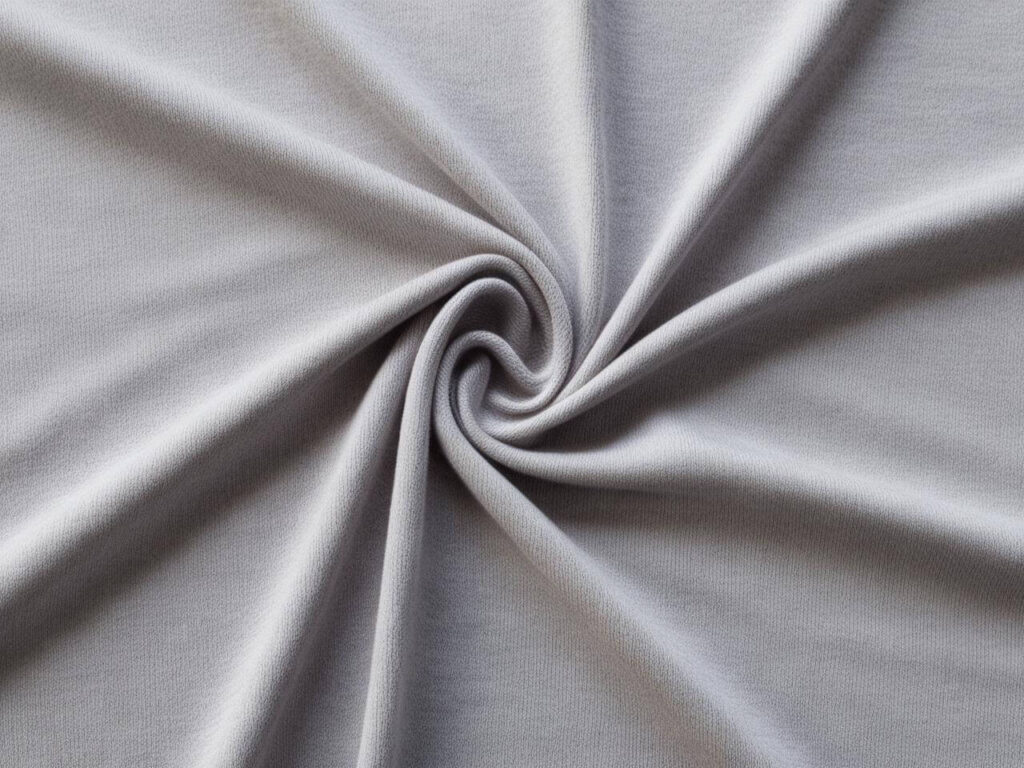Introduction
I’ve always preferred lightweight, breathable fabrics for casual and everyday wear, and single jersey fabric is one of the best choices out there. Whether you’re shopping for T-shirts, babywear, or sportswear, chances are you’ve already encountered this soft, flexible material without even realizing it.
But what exactly is single jersey fabric, and why is it so popular? In this guide, I’ll break down its properties, benefits, and how it compares to other fabrics.
What You’ll Learn in This Guide
✔ What single jersey fabric is and how it’s made
✔ The key characteristics that make it ideal for clothing
✔ How single jersey compares to interlock, cotton, and rib knit fabrics
✔ Its best uses and why it’s preferred for T-shirts and babywear
What is Single Jersey Fabric?
Single jersey fabric is a knitted textile known for its soft, smooth front surface and slightly textured, looped back. It is commonly made from cotton, polyester, or blended fibers, making it a breathable, lightweight, and stretchable fabric ideal for T-shirts, sportswear, and baby clothing.
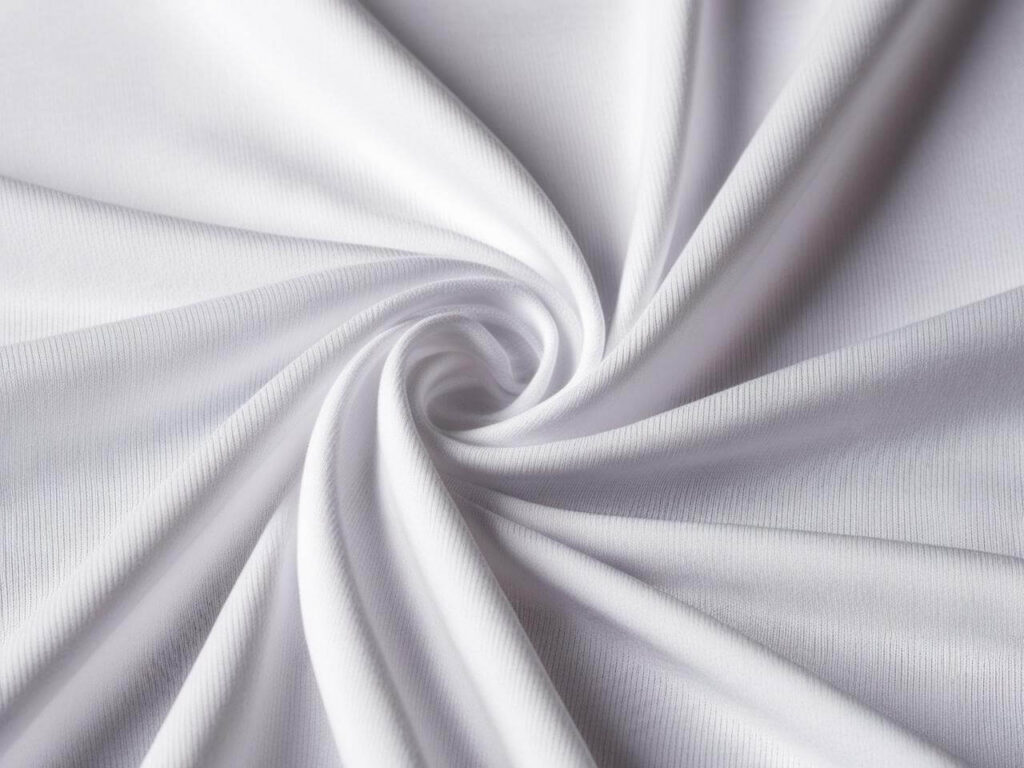
📌 Key Features of Single Jersey Fabric
- Structure: A single-knit fabric, meaning it is made with one set of needles, creating a smooth face and a looped back.
- Material: Often made from cotton, polyester, or a cotton-poly blend, with some variations including spandex for added elasticity.
- Breathability: Excellent air circulation, making it perfect for warm-weather garments.
- Elasticity: Naturally stretchy, even without the addition of spandex.
- Weight: Light to medium weight, making it comfortable for everyday wear.
| Property | Description |
| Texture | Smooth front, looped back |
| Stretchability | Naturally stretchy, flexible |
| Breathability | High, keeps wearer cool |
| Common Materials | Cotton, polyester, blends, spandex |
| Best Uses | T-shirts, babywear, sportswear, underwear |
🎥 Recommended YouTube Video
📌 Single Jersey vs Double Jersey Knit – Sportswear Secrets
🎬 This video explains the differences between single and double jersey fabrics, helping you understand why single jersey is preferred for lightweight garments.
Characteristics of Single Jersey Fabric
Single jersey fabric stands out due to its soft feel, breathability, and flexibility, making it a favorite choice for casual wear. Here’s a closer look at its defining characteristics:
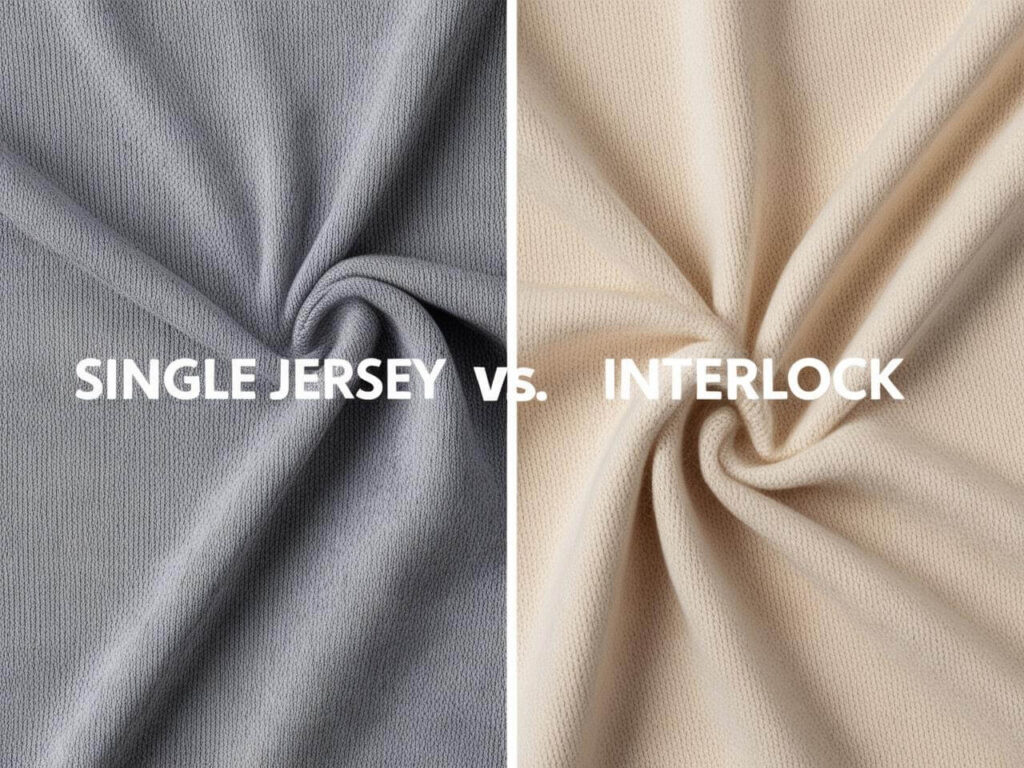
📌 1. Texture & Structure
- One smooth side, one looped side – Unlike woven fabrics, single jersey fabric has a flat, even front and a looped or slightly rougher back.
- Lightweight & Thin – This makes it ideal for summer wear and layering.
📌 2. Breathability & Moisture Control
- Single jersey fabric has excellent airflow, allowing heat and sweat to escape.
- Cotton-based jersey fabrics absorb moisture well, while polyester blends provide better sweat-wicking properties.
📌 3. Stretch & Flexibility
- Naturally stretchy, even without added spandex.
- Holds shape well, making it suitable for form-fitting garments.
📌 4. Softness & Comfort
- Known for its soft, smooth texture, making it perfect for babywear and loungewear.
- Less likely to cause skin irritation, especially when made from organic cotton.
📌 5. Durability & Maintenance
- Resists wrinkles better than woven fabrics.
- Easy to wash and maintain, though some cotton jerseys may shrink slightly.
🎥 Recommended YouTube Video
📌 What is Jersey Fabric? Key Features & Uses
🎬 A short guide explaining the structure and properties of jersey fabric.
How is Single Jersey Fabric Made?
The production of single jersey fabric involves a specialized knitting technique that creates its soft, flexible structure. Unlike woven fabrics, which use interlacing threads, jersey fabric is produced by looping yarns together, making it more stretchable and lightweight.
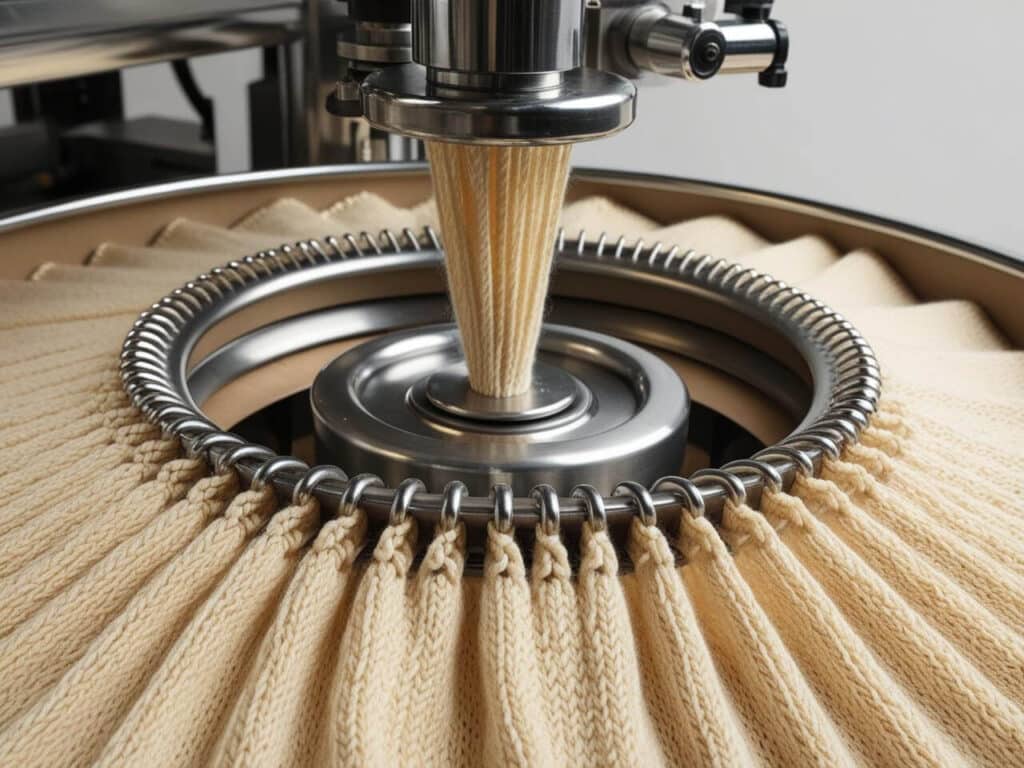
📌 1. Knitting Process
- Single-knit construction – Made using a circular knitting machine with one set of needles, resulting in a smooth front and looped back.
- Gauge & Density – The number of stitches per inch determines how tight or loose the knit is, affecting the fabric’s thickness and stretchability.
📌 2. Types of Single Jersey Fabric
| Type | Composition & Properties | Best Uses |
| 100% Cotton Jersey | Soft, breathable, natural feel | T-shirts, babywear |
| Cotton-Polyester Blend | More durable, wrinkle-resistant | Sportswear, casualwear |
| Jersey with Spandex | Extra stretch, form-fitting | Activewear, leggings |
📌 3. Finishing & Treatments
To enhance durability and performance, single jersey fabric often undergoes special finishing processes, such as:
- Pre-shrinking – Prevents excessive shrinkage after washing.
- Anti-pilling treatment – Reduces fuzz and keeps the fabric smooth.
- Moisture-wicking finish – Common in sportswear for faster sweat evaporation.
🎥 Recommended YouTube Video
📌 How Jersey Fabric is Made – Knitting Process
🎬 An inside look at how jersey fabric is knitted and processed in the textile industry.
Uses & Applications of Single Jersey Fabric
Thanks to its soft texture, breathability, and stretch, single jersey fabric is widely used across the fashion, sportswear, and home textile industries.
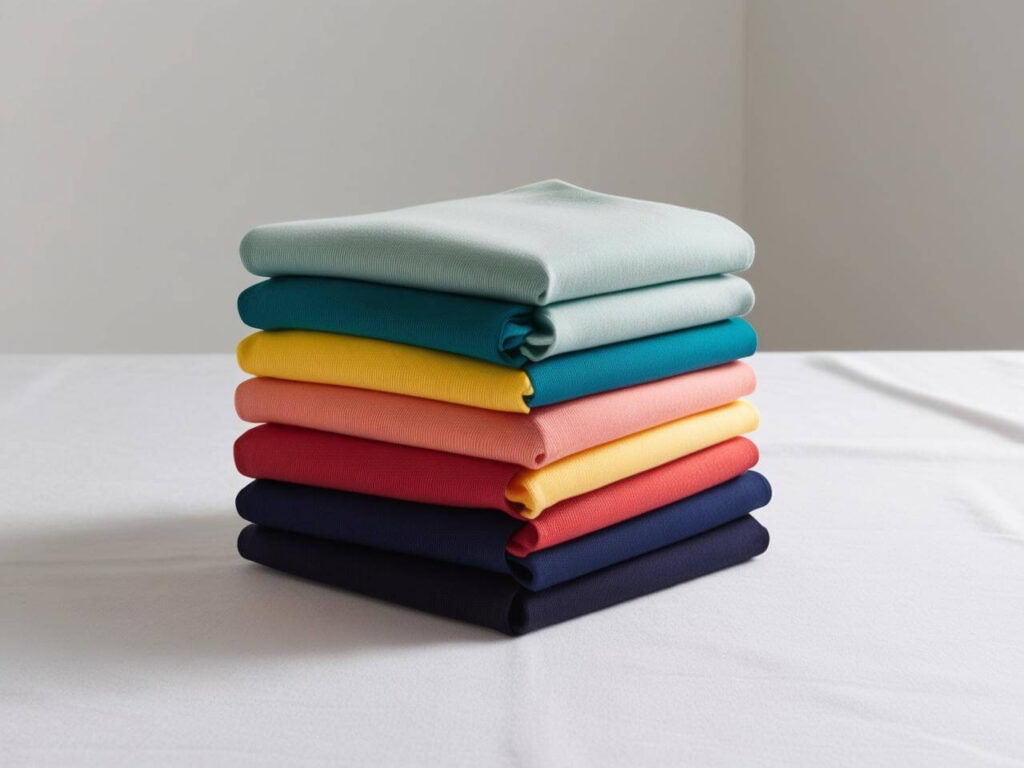
📌 1. Clothing Industry
Single jersey fabric is a go-to choice for comfortable and lightweight garments.
| Garment Type | Why Single Jersey is Used |
| T-Shirts | Soft, breathable, and retains shape well |
| Activewear & Sportswear | Stretchable and moisture-wicking (especially in blends) |
| Babywear | Gentle on sensitive skin, hypoallergenic (especially organic cotton) |
| Casual Dresses & Leggings | Lightweight, drapes well, and flexible |
| Undergarments & Loungewear | Super soft and comfortable for all-day wear |
✅ T-Shirts are the most common use case, as single jersey fabric strikes a balance between comfort, flexibility, and durability.
📌 2. Home & Textile Applications
Besides clothing, single jersey fabric is used for soft and breathable household textiles.
| Application | Why It’s Ideal |
| Bedsheets & Pillowcases | Soft to the touch, breathable, and lightweight |
| Curtains & Upholstery | Flexible and easy to maintain |
| Reusable Cloth Bags | Stretchy, lightweight, and eco-friendly |
📌 3. Special Uses
Single jersey fabric is also adapted for specialty applications, such as:
- Compression wear – When blended with spandex or elastane, it provides excellent flexibility.
- Eco-friendly fashion – Brands increasingly use organic cotton jerseys for sustainable clothing.
🎥 Recommended YouTube Video
📌 Best Fabrics for T-Shirts – Why Jersey Fabric is Perfect
🎬 A quick guide explaining why jersey fabric is ideal for T-shirts and casualwear.
Single Jersey vs Other Fabrics
To understand the advantages of single jersey fabric, let’s compare it with other common knit fabrics, such as interlock, rib knit, and woven cotton.
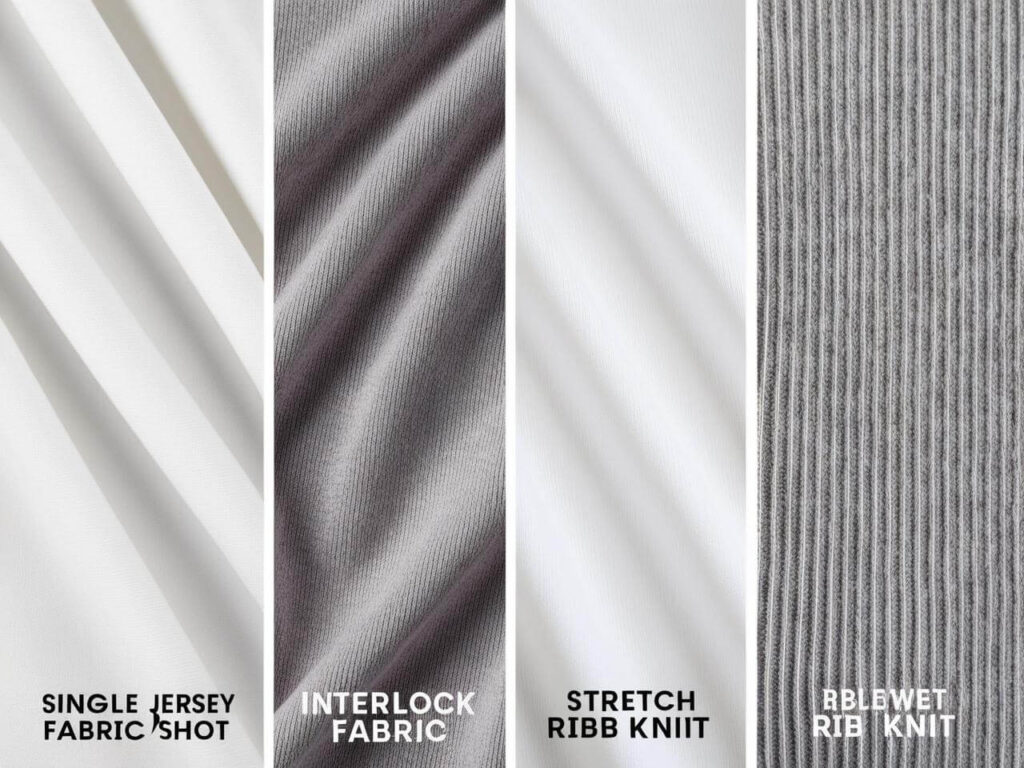
📌 1. Single Jersey vs. Interlock
| Feature | Single Jersey | Interlock |
| Structure | One smooth side, one looped side | Identical smooth surfaces on both sides |
| Stretchability | Moderate stretch | More stable, less stretch |
| Thickness | Lightweight | Heavier and denser |
| Best Use | T-shirts, activewear, undergarments | Winter wear, structured apparel |
✅ Key Takeaway: Single jersey is softer and more breathable, while interlock is thicker and more durable.
📌 2. Single Jersey vs. Rib Knit
| Feature | Single Jersey | Rib Knit |
| Texture | Flat surface with slight loops on the back | Raised, elastic ribs throughout |
| Elasticity | Some natural stretch | Highly stretchable |
| Best Use | T-shirts, casualwear | Cuffs, collars, fitted tops |
✅ Key Takeaway: Rib knit is more elastic, making it ideal for cuffs and fitted clothing, while single jersey offers a smoother and more relaxed fit.
📌 3. Single Jersey vs. Woven Cotton
| Feature | Single Jersey | Woven Cotton |
| Fabric Type | Knitted | Woven |
| Stretchability | Naturally flexible | No stretch unless blended with spandex |
| Breathability | High | Moderate |
| Best Use | T-shirts, loungewear, babywear | Button-up shirts, formalwear, bedding |
✅ Key Takeaway: Single jersey is stretchy and comfortable, while woven cotton is more structured and formal.
🎥 Recommended YouTube Video
📌 Single Jersey vs Interlock Fabric – What’s the Difference?
🎬 A helpful video explaining the differences between single jersey and interlock fabric.
Pros & Cons of Single Jersey Fabric
Like any fabric, single jersey fabric has its advantages and limitations. Below is a detailed breakdown:
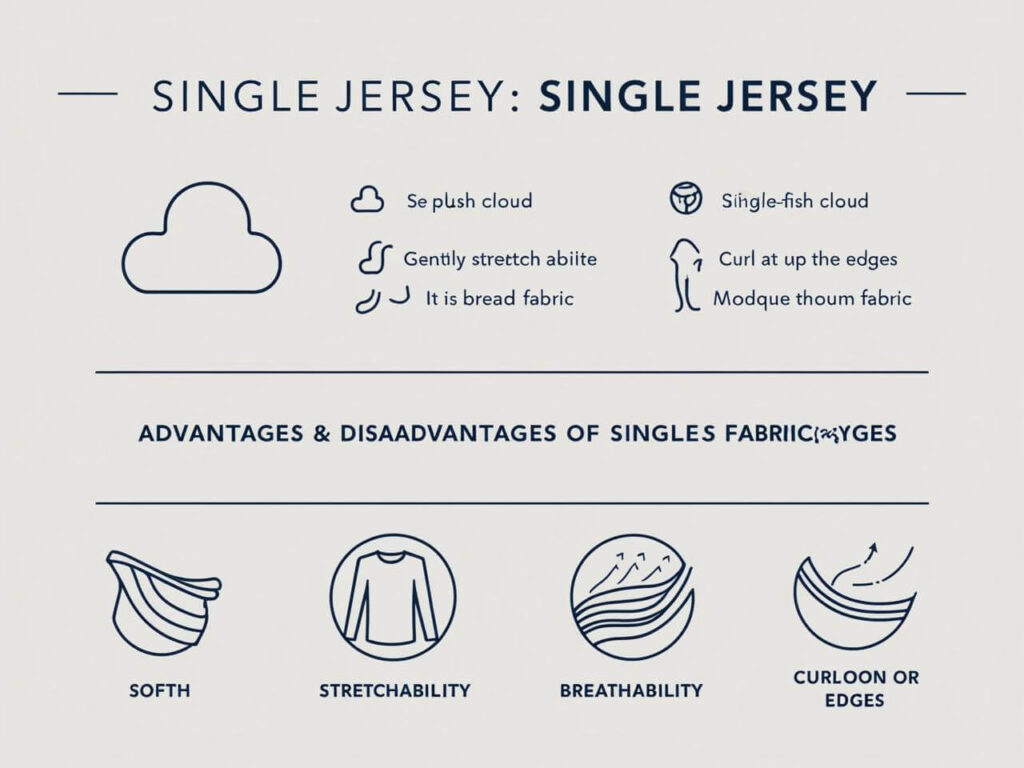
📌 1. Advantages of Single Jersey Fabric
✅ Soft & Comfortable – Its smooth surface makes it ideal for T-shirts, babywear, and loungewear.
✅ Breathable – Excellent airflow, keeping the wearer cool and dry.
✅ Lightweight & Flexible – Feels light on the skin, allowing for easy movement.
✅ Naturally Stretchy – Provides good elasticity even without spandex.
✅ Versatile Applications – Used in casualwear, sportswear, and home textiles.
✅ Easy to Maintain – Machine washable and requires minimal ironing.
📌 2. Disadvantages of Single Jersey Fabric
❌ Less Durable Than Interlock – Due to its single-knit construction, it can be thinner and less durable.
❌ Prone to Curling at Edges – The cut edges tend to roll up, making it trickier for sewing.
❌ Absorbs Moisture – 100% cotton jerseys can retain moisture rather than wick it away.
❌ Moderate Wrinkle Resistance – Less prone to wrinkles than woven fabrics, but not as resistant as polyester blends.
🎥 Recommended YouTube Video
📌 Jersey Fabric Pros & Cons – What You Need to Know
🎬 A detailed video outlining the pros and cons of jersey fabric and its applications.
FAQs: Everything You Need to Know About Single Jersey Fabric
To address common questions about single jersey fabric, here are concise and informative answers optimized for search intent.
❓ Is single jersey fabric good for summer?
✔ Yes! Single jersey fabric is highly breathable, allowing for excellent airflow and moisture absorption, making it an ideal summer fabric.
❓ What is the difference between single jersey and interlock fabric?
✔ Single Jersey has one smooth side and one looped side, offering lightweight flexibility.
✔ Interlock Fabric has identical surfaces on both sides, making it thicker, stronger, and more durable.
❓ Does single jersey fabric stretch?
✔ Yes! It has natural stretchability, even without spandex.
✔ Adding spandex or elastane increases its elasticity and shape retention.
❓ Is single jersey fabric always 100% cotton?
✔ No. While many single jersey fabrics are made from 100% cotton, there are also blends with polyester, rayon, and spandex for added durability and performance.
❓ What is single jersey fabric best used for?
✔ Most commonly used for:
- T-shirts & casualwear
- Sportswear & activewear
- Babywear & undergarments
- Loungewear & home textiles
Final Thoughts: Why Single Jersey Fabric is a Popular Choice
Single jersey fabric is a versatile, lightweight, and breathable material, making it a staple in casualwear, activewear, and home textiles. Whether you’re looking for a soft T-shirt, a comfortable pair of leggings, or baby-friendly clothing, this fabric delivers flexibility, comfort, and ease of care.
✔ Key Takeaways
✅ Soft & Stretchable – Feels great on the skin and moves with you.
✅ Breathable & Lightweight – Perfect for summer wear and activewear.
✅ Easy to Maintain – Machine-washable and requires minimal care.
✅ Ideal for Various Applications – Used in T-shirts, sportswear, baby clothing, and home textiles.
If you’re considering single jersey fabric for your next clothing project or wardrobe update, it’s a reliable and comfortable choice that suits a variety of styles and functions.
